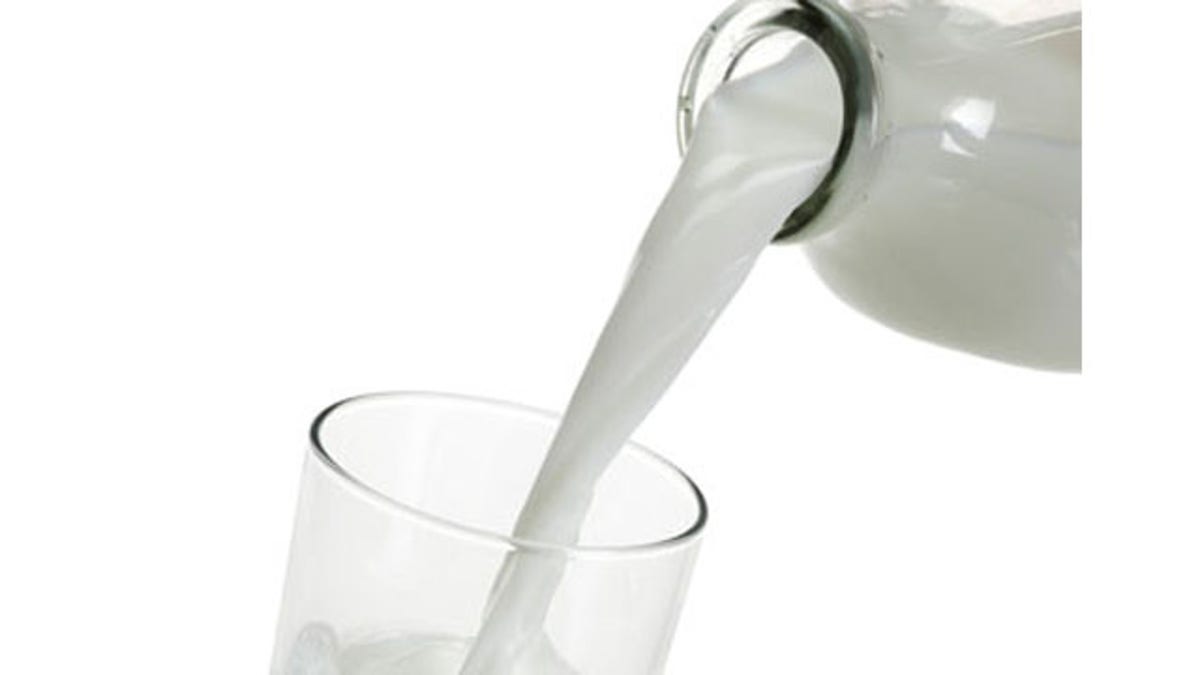
(iStock)
If you believe that God (or Mother Nature) is infallible then why tamper with His bounty? That’s what I think when I see skim milk. The watery texture, unappealing flavor and bluish cast result from stripping away the fat. But it’s no longer all that clear that skim is healthier than whole.
Skim is more than just milk without fat. Skim is milk that’s fortified with synthetic vitamins to replace those lost in fat-removal, and milk solids to replace protein and calcium lost in processing. Skipping over the natural v. synthetic vitamin debate, consider how milk solids are made and what they contain.
Whole milk is separated in a centrifuge that outputs two streams, one cream and one fat-free milk. The fat-free milk is pasteurized then condensed in a vacuum evaporator to remove water and increase the concentration of solids. It’s then sent to a spray dryer, think industrial, high-pressure milk atomizer. The sprayer shoots a fine spray of milk into a warm, air-filled chamber that removes more moisture, turning the milk into powdery spherical particles, aka milk solids. They pop up in various low-fat and fat-free dairy products.
I don’t think that processing food is universally bad and appreciate the technology that creates liquid nitrogen ice cream, edible, helium-filled green apple balloons and especially Pringles. Had Pringles emerged from the kitchen of a fancy molecular gastronomy chef rather than Proctor and Gamble’s, the irresistible stackable chip might be as highly regarded as caviar foam or Chef Ferran Adrià’s frozen Gorgonzola volleyball. Or not. But milk solids are different.
That’s because the manufacturing process oxidizes the tiny bit of cholesterol left in the milk. And oxidized cholesterol is something you’d probably choose to avoid. Critics say it “irritates” your blood vessels making them more likely to create plaque than regular cholesterol, and worse, it oxidizes other existing cholesterol molecules.
Bob Roberts, professor of Food Science at Penn State, says that milk solids add negligible traces of oxidized cholesterol to skim. He drinks skim and says the science isn’t in on whether that oxidized cholesterol enters the blood stream.
In any case, pediatricians routinely recommend skim and low-fat to help parents control their children’s calories. They’re the only types of milk available in grades K through twelve in New York City, the nation’s largest public school system. New York allows only pre-K children, a fraction of the city’s 1.1 million students, to have whole milk.
Restricting calories, we now know, leads to temporary weight loss as the metabolism adjusts to weight-loss by slowing down. Fat isn’t making us fat.
As Walter Willet, an epidemiologist and department chair in nutrition at Harvard’s School of Public Health wrote in the American Journal of Medicine, “Diets high in fat do not appear to be the primary cause of the high prevalence of excess body fat in our society, and reductions in fat will not be a solution.”
Maybe it’s time to re-examine the national saturated-fat-is-bad hypothesis. Not only do fats trigger the release of cholecystokinin in the small intestine that tells your body its full, animal fat, in moderation, is healthy.
Saturated animal fats from healthy, pasture-raised animals contain beneficial omega-3s (which we think of as coming from fish, flax or nuts), lower LDL, (“bad” cholesterol), and contain vitamins C, E and B12. (Missouri-based U.S. Wellness Meats, run by fifth-generation rancher John Wood is a great pasture-raised meat source.)
Milk from these animals is similarly filled with other beneficial compounds, nutrients and enzymes, many in the milk’s fat. Which is why moderate amounts of dairy fat are actually good for you.
Whole milk’s three macronutrients—protein, fat and carbohydrates—are naturally, perfectly balanced. It has complete proteins (i.e. adequate amounts of all nine essential amino acids), B vitamins and saturated and unsaturated fats. Its A and D vitamins help digest protein, assimilate calcium and absorb other fat-soluble vitamins. It’s nutritionally complete.
Nina Planck adds in Real Food (Bloomsbury) that saturated milk fats like butyric acid are easily digestible because they don’t have to be first emulsified by the liver. “Unlike polyunsaturated fats, which the body tends to store,” she writes, “the saturated fats in milk are rapidly burned for energy.”
Years of creating low-fat and fat-free dairy products have culminated in a skim milk product that’s requires synthetic and processed additives to make it nutritionally equivalent to what it once was—whole milk.
But nutritionally equivalent isn’t biologically equivalent. And that’s something to consider.
